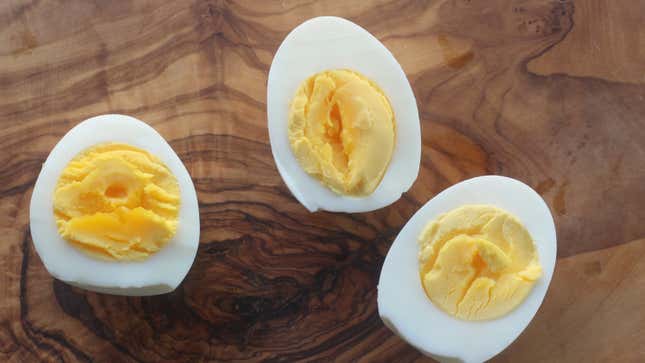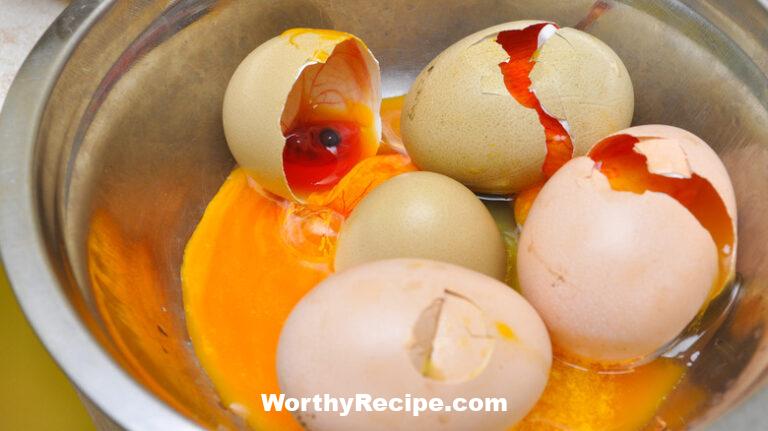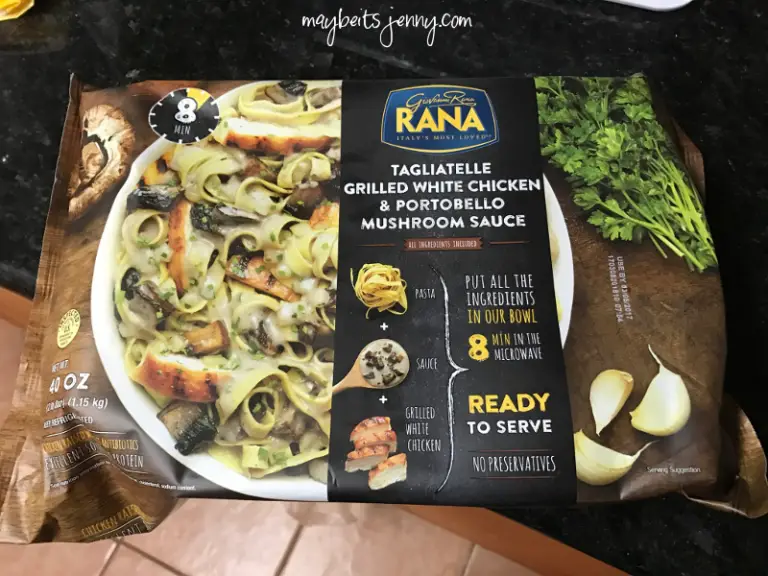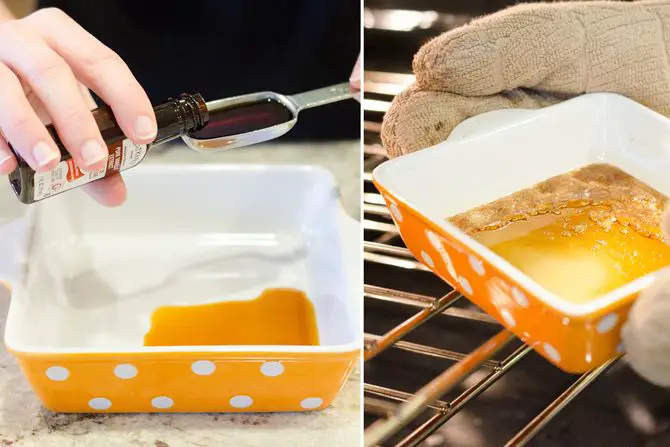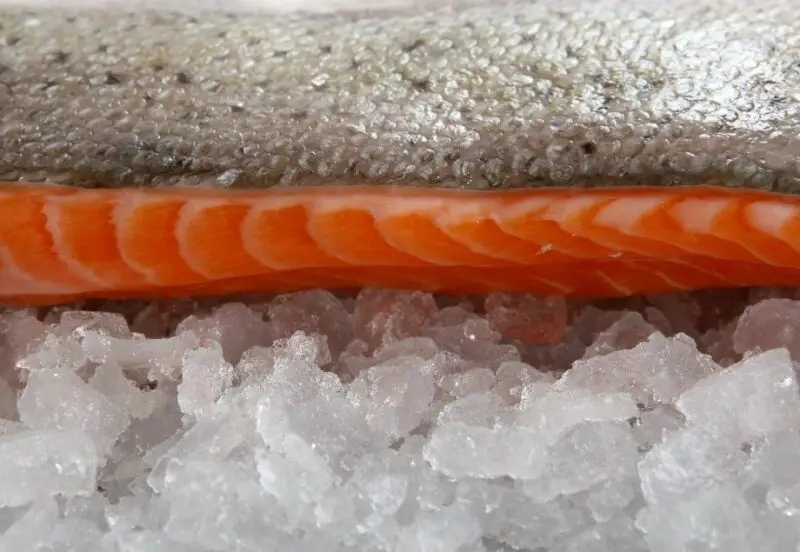Hard-boiled eggs are a nutritious and easy-to-eat food that many people enjoy for their convenience and versatility. They can be eaten alone or included in a salad, sandwich, or used as an ingredient in recipes ranging from deviled eggs to egg salad. However, have you ever wondered why some hard-boiled eggs come out with flat bottoms? Is it something wrong with how you cook them, or is it something to do with the egg itself?
This article will explore the anatomy of eggs, the science behind boiling them, what causes flat-bottomed eggs, techniques for avoiding flat bottoming boiled eggs, common mistakes when boiling food, final recommendations for getting the perfect shape of boiled eggs as well as final thoughts about preparation and storage.
Understanding the Anatomy of an Egg
Before we delve into why hard-boiled eggs may have a flat bottom let’s briefly discuss what makes up an egg. An egg contains three distinct parts: the shell which protects its contents from outside damage; the white (albumen), which provides protein; and the yolk which is high in vitamins and minerals such as Vitamin A and Phosphorus.
When a hen lays an egg, it takes approximately 25 hours from formation to completion with most of this time spent creating shell development. The shell membrane then solidifies over several hours before being laid. The size, coloration and shape of an egg differ between species but does not impact its nutritional value.
The Science behind Boiling Eggs
Heat is an essential element in cooking a boiled egg that yields correct texture. When heated at the appropriate temperature range – between 82°C to 100°C (180°F-212°F) – proteins present in white dissolve rapidly through denaturation which forms chemical bonds between folded amino acids chains breaking down their structure. This bond helps make steam causes the expansion of air pockets in the egg.
The heat also causes a chemical reaction that brings together sulfur and hydrogen atoms, which causes bonds to form between the proteins in the egg white. This bond forms a solid gel like structure that surrounds and supports the yolk of the egg. The longer eggs sit in boiling water, the more solid this protein gel becomes. However, if cooked for too long or at too high of a temperature, they become rubbery and unpalatable.
Causes of Flat Bottomed Hard Boiled Eggs
There are several causes leading to flat bottoming hard boiled eggs including:
Cause #1: Inadequate Water Level in the Pot
Water is crucial when cooking eggs because it helps prevent direct heating on a single side when immersed and reduces stickiness to one surface. If there is not enough water present in your pot when boiling eggs, it can cause overheating at its base resulting in uneven distribution of heat throughout its contents; thus producing flat-bottomed eggs due to overcooking caused by one side being subjected continuously to substantial heat as opposed to receiving uniform concentration.
The solution for issue #1 is to ensure that enough water is used during boiling and that it covers all parts of your eggs. For every six large-sized eggs you will need approximately 4 cups (2 pints) of water.
Cause #2: Overcrowding in the Pot
Overcrowding your pot when boiling multiple eggs at once can lead to flat-bottoming further proving Newton’s hypothesis;, “the bigger they are, the harder they fall.” Too many large-sized eggs limits their movement within the container causing them to bump each other continuously throughout cooking time increasing impact pressure resulting in flattened bases whose impact points meet with opposition from its surroundings with fewer air pockets existing just above them.
It’s best practice not to overcrowd your pot and instead choose smaller batches when cooking your boiled eggs.
Cause #3: Sudden Temperature Changes
Rapid temperature changes is another factor leading to flat-bottomed eggs. If you subject eggs when cold directly into boiling water, air pockets trapped inside and the contents expand too rapidly which can possibly crack it causing its whites to seep out. As cooling occurs, they tend to solidify at the bases towards which point there is minimal expansion proof-reading.
The solution for this issue includes gradual heating up of your eggs so that it reaches boiling point slowly over time making sure all content regions equilibrate to the same temperature from shell thickness through yolk to white ensuring uniformity throughout your egg’s content before cooking for guaranteed retention of shape.
Techniques for Avoiding Flat Bottomed Hard Boiled Eggs
Technique #1: Stovetop Cooking with a Lid
If you want the best results when boiling hard-boiled eggs (with intact round bottoms), cooking over stovetop remains the optimal method since a lid trap’s steam heat ensuring no boiling-without-evaporation occurs. In addition, covering them also locks in moisture thereby preventing substantial vapor loss from exteriors around its base; thus improving interior integrity allowing it to hold under external pressure stress-free growth.
Here is how you can cook your hard-boiled eggs stovetop:
- Start by filling a pot with enough water as discussed earlier and place on high heat until it boils.
- Next, once an egg reaches room temperature bring it to boil using low-medium heat.
- Cook between 6-12 minutes depending on intended firmness then remove carefully with a slotted spoon drain on paper-towel-lined surfaces.
- Finally, cool them off immediately after pouring out hot water by dowsing in cold water preferably using ice cubes prevention against residual carry-over cooking occurring for best quality shape consistency.
Technique #2: Using Sous Vide Method
Sous-vide or “under vacuum” is another technique used in culinary circles today. It involves cooking food in a vacuum-sealed bag and then placing it in a warm water bath at a precisely controlled temperature to induce the desired result.
To use this method for boiling eggs, you will need to invest in specialized equipment like an immersion circulator which cooks your egg perfectly inside the pod. Here’s how to do it:
- Start by filling up your sous vide container with water, set the temperature according to the level of firmness desired .e.g., 63°C or 147°F for entire albumen gelling.
- Meanwhile, prep white-shelled eggs well thoroughly washed off afterwards and decant carefully into bags one per bag. You can add butter, salt & pepper or even herbs for flavouring before sealing them inside.
- Once sealed trust your device either to hold any countering water displacement following drop advection or instal retention techniques against thermic expansion & contraction that could occur during circulation time leading to flat bottoms after extraction.
- Remove them carefully from their packaging once they’re cooked entirely and are just waiting to soak up hunger control.
Common Egg Cooking Mistakes to Avoid
Cooking boiled eggs is not rocket science but adhering to these common mistakes shouldn’t be too difficult either:
- Using non-cleaned cookware: This mistake may sound obvious but is surprisingly one forgotten sometimes, using soiled equipment during boiling leads to bacterial growth causing off-flavours and potential pathogens sharing nutrients with blooms that can lead down a treacherous road.
- Unchilled Cookwares: Do not leave unused tools sitting around at room temperature as bacteria grows rapidly thereunder as mentioned earlier resulting potentially poor outcomes leaving us feeling disappointed with our hard-boiled eggs not reminiscent of beautiful creations alone.
- Not timing correctly: Overcooking your egg yolks causes breaks in solid cholesterol making them taste powder-like while undercooked whites prove runny gross causing internal inconsistencies and equally inconsistent cleaning difficulty avoiding outbreaks.
Incorporating these tips can provide boiled eggs with round bottoms that are nutritionally dense and healthful to consume.
Conclusion
Boiled eggs remain a nutritious, convenient, and straightforward food option for many of us even during rush hours. Having perfectly cooked hard-boiled eggs without a flat bottom is no reserve for Michelin stars restaurants but instead, it is wholly possible to achieve in the comforts of your own kitchen using stovetop method or sous vide method but keeping an eye on key causes responsible for flat-bottoming which include inadequate water levels, overcrowding in the pot, and sudden temperature changes. By following our technique recommendations and common cooking mistakes to avoid like unclean cookware,chilling them beforehand,timing correctly amongst others you’ll be able to create equally perfect boiled eggs that don’t disintegrate under heat pressure in the slightest.
Q&A
- Q: Why do my hard-boiled eggs always end up flat on the bottom?
A: This is a common issue for many home cooks. The reason your hard-boiled eggs are flat on the bottom is due to the egg white settling towards the bottom during the cooking process. This can happen when the eggs are placed in boiling water too quickly or if they’re cooked at too high of a temperature.
- Q: Can I prevent my hard-boiled eggs from being flat on the bottom?
A: Yes, there are a few ways to prevent this from happening. One method is to gently lower your eggs into boiling water instead of dropping them in all at once. You can also start with cold water and bring it to a boil gradually as opposed to starting with boiling water straight away. Additionally, make sure not to overcook your eggs as this can cause them to be flattened as well.
- Q: Do flat-bottomed hard-boiled eggs affect their flavor or texture?
A: Not necessarily – while they may not look as aesthetically pleasing, there should be no significant difference in taste or texture. However, if you’re using boiled eggs for presentation purposes, such as in deviled eggs or egg salad recipes, you may want to take extra care in preventing them from becoming flat.
- Q: Are there any other factors that could contribute to flat-bottomed hard-boiled eggs?
A: Yes – another factor could be overcrowding in the pot during cooking. If too many eggs are crammed together while cooking, they may not have enough room for the egg whites to fully surround and cook evenly, resulting in uneven shapes and potentially flat bottoms.
